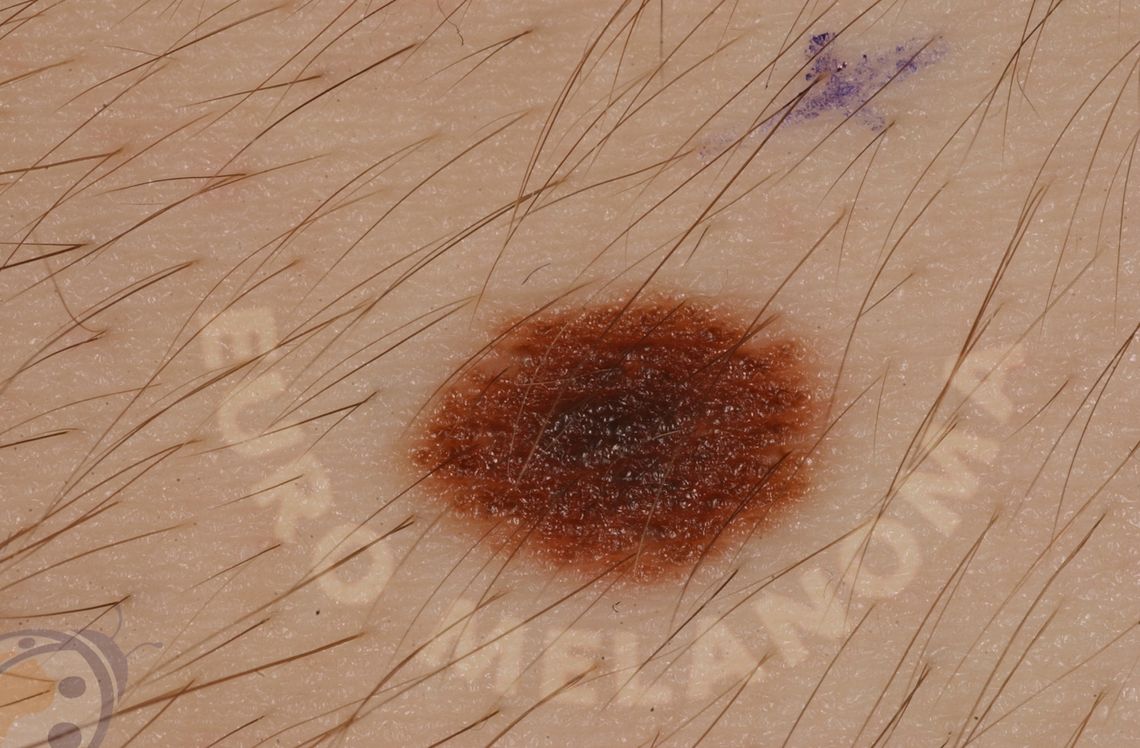Moles
Choisir une autre lésion bénigne
Moles (called nevi in scientific terms) exhibit a huge variety of appearances.
Nevi
Nevi can be flat or raised, vary in colour from pink to dark-brown to black, and in size from a few millimetres to several centimetres. It is rare for nevi to appear after the age of 50.
The majority of nevi are harmless, but certain types should be monitored to watch for any changes or signs of melanoma. Less than 30% of melanomas arise from nevi and they tend to appear spontaneously.

Atypical nevi
Atypical or dysplastic nevi are moles that appear different from the rest. Because of their similarity to melanomas, it is important to have any atypical nevi checked by a dermatologist to ensure they are benign. The ABCDE of melanoma identification can be used to determine whether you should set up a consultation:
-
Is the mole Asymmetric?
-
Does it have indistinct or uneven Borders?
-
Does it change Colour?
-
Is it larger than 6mm in Diameter?
-
Has its size, shape or behaviour Evolved over time?
People with multiple atypical nevi have a much higher risk of developing melanoma, so their skin should be examined and monitored on a regular basis to look for any changes.
Gallery
Dermal nevi
Dermal nevi range in shape from slightly raised to prominently rounded. They can vary in colour from pink to light or dark brown. Dermal nevi are benign melanocytic lesions that rarely represent a risk of melanoma growth.


























